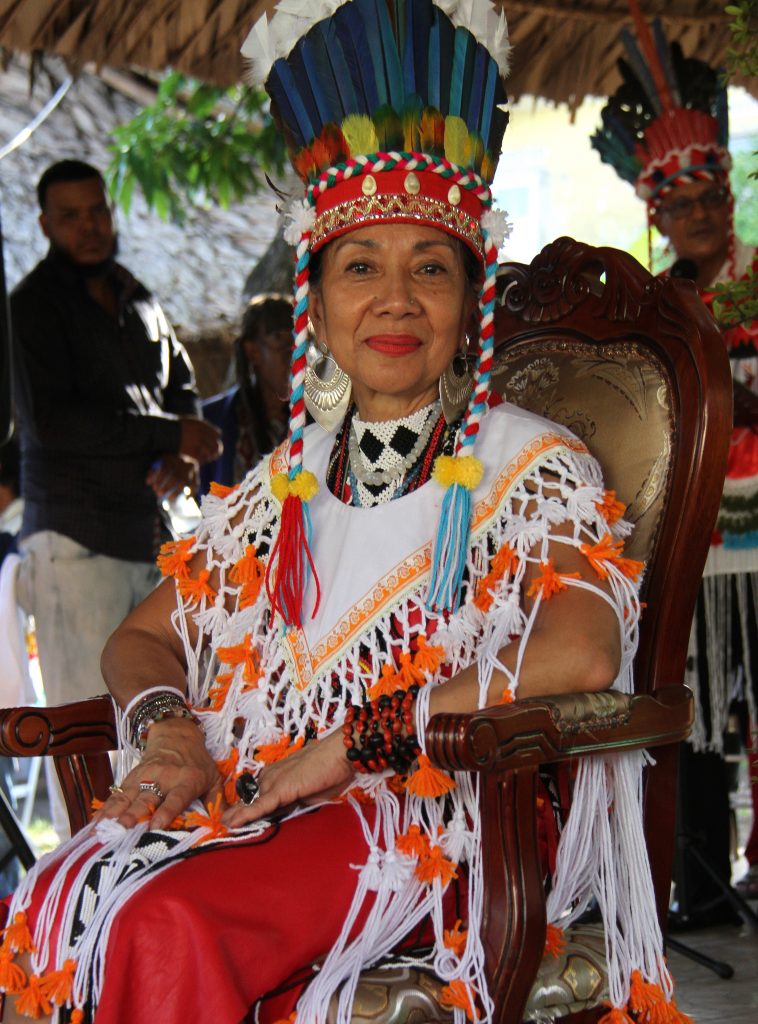Keeper of traditions

Culture Matters
From the lowest earth
To the highest heaven
Let the smoke
of the sacred fire
Heal and protect us
RITUAL. It is so important to the indigenous community and other ancient cultures. Last Saturday, the Santa Rosa indigenous community of Arima installed a new queen with much ceremony, witnessed by representatives of indigenous communities from around the world.
The inauguration of Queen Nona Lopez Aquan provided us with another opportunity to peek into this world and celebrate the continuation of practices that are thousands of years old.
This narrative began long before the arrival of Europeans to our shores. Our proximity to South America resulted in considerable travel between here and the continent, as well as the migration and settling of different peoples. The names of the peoples conjure another time – Taino, Chaima, Kalipuna, Arauca, Warao.
The indigenous peoples of Arima proudly lay claim to their Nepoio ancestry. Even the name Arima is indigenous in origin, meaning water. The great Nepoio war chief Hyarima is renowned for leading his people in resistance against Spanish enslavement, conversion to Christianity and decimation of their community. It is said he led many successful incursions against the Spaniards from his base in Arima.
Today, the battles of Santa Rosa are more inward-facing. Queen Nona immediately articulated her intention to empower young people, deepen community linkages and ensure survival of their traditions.
For this community it is important to have the presence of a queen providing leadership alongside the chief. Consequently, the rituals behind her installation were enacted with much seriousness.
Drumming, chanting and the playing of musical instruments are all integral features of these ancient rites. The music and chanting serve to pull energies together and ensure that attention is focused on the ritual.
In many ways, the drum is at the heart of traditional ceremonies. It is said the very large drums represent the earth. As researchers have pointed out, the “drum represents the voice of the Creator. It speaks of a balance with the natural world, often told in song.”
Incense and tobacco are other significant aspects of ancient indigenous ritual. Tobacco has been grown in indigenous communities across the globe from Native Americans, to the aborigines of Australia, to here in the Caribbean. “The smoke is believed to be the pathway to the spirit world, and as such carries all thoughts, feelings and prayers to the Creator.”
At the installation of the new queen, the smoke was wafted over her body; in other rituals, the pyai or spiritual healer would blow the smoke from his tobacco cigar directly into the faces of those taking part in the ritual.
Tobacco was also believed to have healing properties. It is said that indigenous peoples used it as a dressing for wounds. Many Native Americans burn the tobacco rather than smoke it. They combine it with a mixture of “medicinal plants such as sage (removes negative energy), cedar (cleanses and protects) and sweet grass (brings spirit of love and kindness).”
Of course, our indigenous communities are more than romantic representations of a time past. If we are willing to listen, they still have much to teach our developing nation. For instance, indigenous communities everywhere understand the concept of living in harmony with the earth. This concept, powerful in its simplicity, provides us with the solution for slowing down the damage we have already done to our planet.
Similarly, they understand the significance of planting your own food, and its impact on mental well-being and physical health; important lessons for us with our astronomical food importation bill.
They may also teach us a great deal about the importance of a spiritual guide and healer. Many ancient cultures respected this elder as an important part of the leadership within their community.
As we diversify away from Western and predominantly Christian definitions of faith and religion, it is important to recognise that we can benefit significantly from the traditions and practices of ancient cultures.
Internationally, the role of a monarch is changing. For Queen Nona it will be no different as she will have many competing priorities, not least being her duty as keeper of traditions. Additionally, global concerns about representation of indigenous matters at the political level, integration into society and quality of life are also reflected here in TT. For now, it is wonderful to see her tears of joy, her sincerity and enthusiasm.
We wish her well and in the words of her people say Mabrika, welcome.
Dara E Healy is a performance artist, communications specialist and founder of the NGO, the Indigenous Creative Arts Network – ICAN


Comments
"Keeper of traditions"